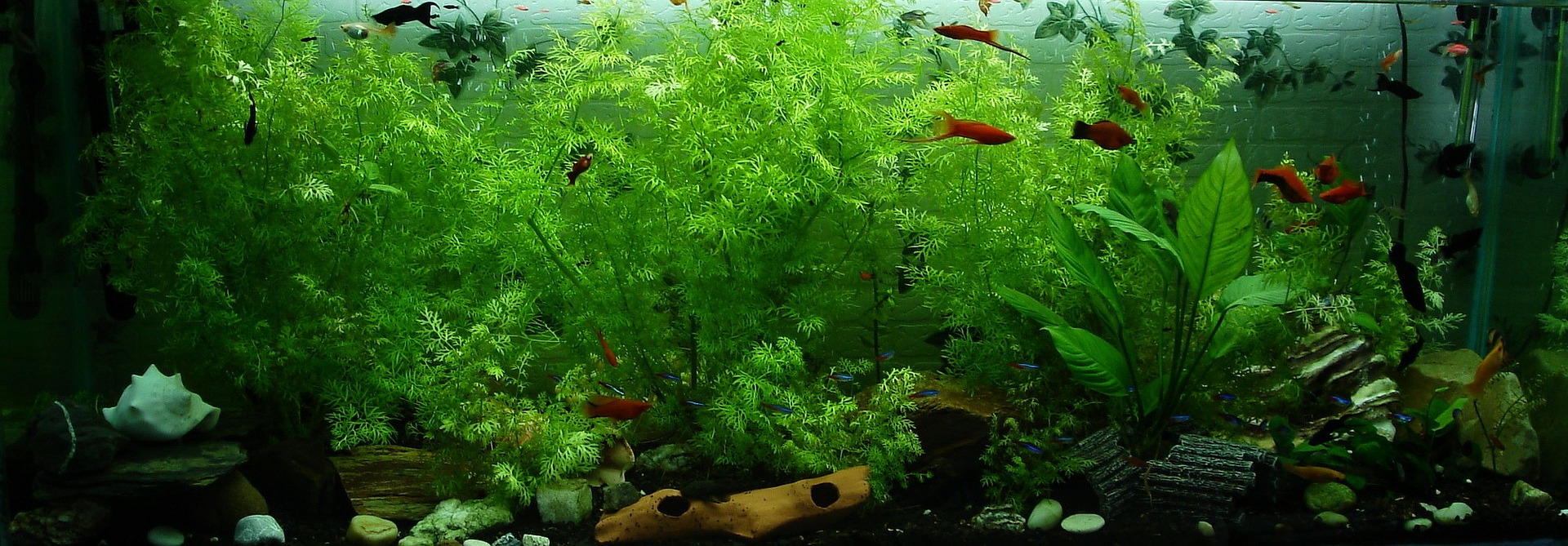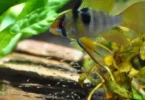Last Updated on November 19, 2022 by Matt
Ammonia poisoning is a deadly killer in fish tanks.
Ammonia is one of the three inorganic nitrogenous compounds found in aquariums, the others being nitrite and nitrate. It is the most toxic of these three compounds; even at very low concentrations it can be lethal for fish.
In this complete guide to ammonia poisoning in fish tanks, we will run through the signs and symptoms of ammonia poisoning and how you can treat it and prevent it from occurring.
IN THIS ARTICLE
What is Ammonia Poisoning
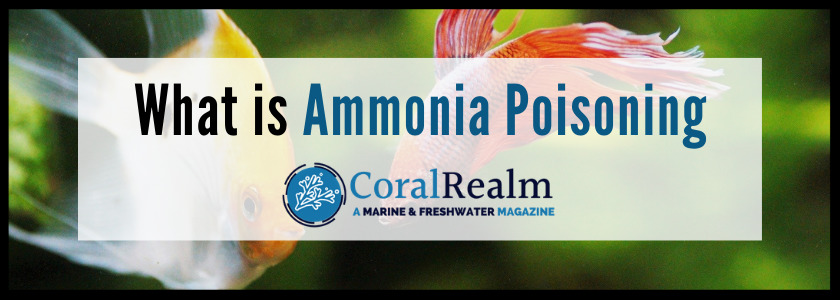
Ammonia Poisoning in fish tanks occurs when ammonia levels rise. Even small concentrations of ammonia in an aquarium are incredibly toxic, and at the first sign of a spike in level you will need to act fast.
We are talking here about ammonia (NH3). This compound is the toxic, unionized form of ammonia. When in water it acts as a base and forms the ionized ammonium (NH4+). This ammonium is not toxic to fish. Water with a higher pH will form more toxic ammonia, while more acidic water will cause more non-toxic ammonium to be formed.
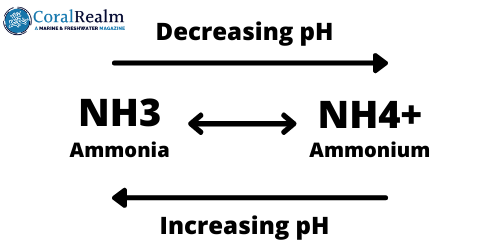
Ammonia poisoning, along with nitrite poisoning, is a prime symptom of new tank syndrome. This condition primarily affects new tanks but can also affect more mature tanks. It is characterized by ammonia and nitrite level spikes.
Even at concentrations as low as 0.05 ppm (mg/L) fish will start to show signs of ammonia poisoning. Fish death will begin to occur at 1 ppm in some fish species, and at 2 ppm you will have tank-wide fish death on your hands.
Causes of Ammonia Poisoning in Fish
Ammonia poisoning is caused by an increase in ammonia levels, and this can have multiple causes. To understand how ammonia is produced and broken down in the tank environment, you can read our article on the aquarium nitrogen cycle.
Ammonia is produced by fish themselves as a byproduct of protein catabolism, or protein synthesis. It is also produced as organic matter such as fish feces and waste food decay and decompose.
Overfeeding and overstocking are prime causes of ammonia spikes. Overfeeding means more waste organic matter which drives ammonia production. Overstocking means there are too many fish for the size of your fish tank, and will produce too much waste for your aquarium filter to deal with. The ammonia will overrun the nitrifying bacteria which convert it to much less toxic nitrate, and the ammonia levels will build.
Lack of cleaning is a big contributing factor as well. If you don’t regularly maintain your fish tank then the organic waste will build, decompose, and release ammonia. Regular water changes are also needed to directly remove ammonia from the water column.
Symptoms of Ammonia Poisoning in Fish
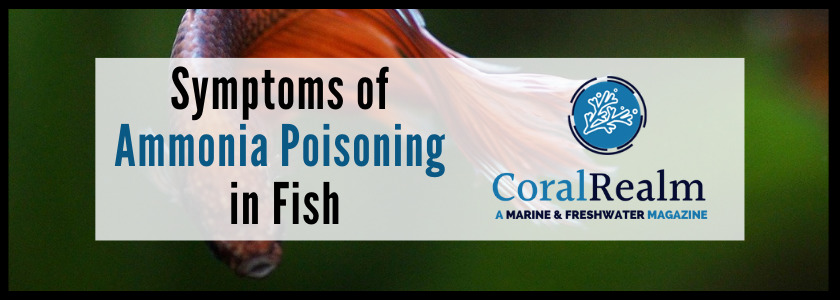
Ammonia levels can gradually build in the fish tank, or they can suddenly spike. Both of these occurrences will result in ammonia poisoning in your fish. But in a sudden onset you will see your fish behavior change immediately, while in a chronic case you may see the behavior of your fish change slowly but surely.
You should look out for the following symptoms of ammonia poisoning in your fish, and at the first sign of these you should test your water for ammonia to get the full picture.
- Rapid gill movements
- Gills turn a dark red/purple color
- Gasping for air
- Lethargic behavior
- Appetite loss
- Bloody streaks on fins or body
Ammonia will first attack the gills of fish, so this is where the first signs of ammonia poisoning will be centered. The gills will look reddened, or purple in color. As the ammonia attacks and damages the delicate gill tissue the fish won’t be able to draw oxygen from the water as efficiently. As such they will rapidly move their gills and also be by the surface or filter outlet or air stone; anywhere where there is a higher concentration of oxygen.
Fish directly excrete ammonia as waste from their gills. As the ammonia concentration in the water builds and damages the gills, the fish’s ability to excrete waste ammonia lessens greatly. As such the amount of toxic ammonia in the fish will increase, and the ammonia will begin to attack other parts of the body.
Appetite loss is a key indicator of an unwell fish. As is lethargic behavior. As the ammonia attacks and shuts down key processes and functions they won’t be able to eat properly and movements will be painful and use energy they don’t have; not being able to get enough oxygen through their damaged gills will also have this effect.
As ammonia poisoning advances it will begin to attack the tissues of the fish. As the muscle tissue degrades bloody streaks can appear on the body of the fish. When ammonia poisoning advances into the latter stages the brain and spinal cord will be damaged, and the fish will begin to haemorrhage internally. This damage is catastrophic, causing the death of the fish.
Treating Ammonia Poisoning in Fish
There are a few ways of treating ammonia poisoning in fish. While you can’t treat the effects of the ammonia directly, what you need to do is quickly lower the ammonia level in the water column so that the fish can begin to heal.
The first thing that you should do is a large scale water change. A water change of 50% will remove a large chunk of ammonia, and so give immediate relief. You should ensure that you use a good water conditioner on the tap water, and also make sure the new water is the same temperature. Using RODI water is the ideal option for water changes. Suddenly raising or lowering the temperature will further stress your fish.
Higher pH levels will cause more toxic ammonia to be formed in the tank. Therefore lowering the pH will help to lower ammonia levels and alleviate the symptoms of ammonia poisoning. Probably the quickest way of lowering the pH is to use a chemical media such as Fluval Aquatic Peat Granules. Peat contains humic acid and tannins which will lower the pH of the water. Be careful that you don’t stress your fish by lowering the pH too much or out of their preferred range.
You can also use a water conditioner such as Seachem Prime which will bind ammonia and neutralize its toxicity. We recommended using this after conducting a 50% water change. If you test for ammonia and find that you still have high levels, using this conditioner can help to further reduce the concentration while you work to keep ammonia levels down.
Preventing Aquarium Ammonia Poisoning in Fish
As with anything, preventing ammonia poisoning in fish is the best treatment there is.
Working to prevent ammonia level spikes and ammonia poisoning will also mean that your tank as a whole will be healthier. The following steps you can take to prevent ammonia poisoning will also help to prevent nitrite and nitrate poisoning as well.
Don’t overfeed your fish
Overfeeding your fish is very easy to do, and is very tempting to do as well. Feeding time is always exciting, but you should only feed your fish what they can finish in 2-3 minutes.
Any more than this and you will be overfeeding them. Overfeeding will create more wasted food that settles on the substrate or gets caught by the filter. As it decomposes it will release ammonia into the water column.
Not only will it create more ammonia, which could overrun the biological filtration action of your tank and cause an ammonia spike, but overfeeding will directly cause your fish to become overweight and unhealthy. Overfeeding can cause swim bladder issues in fish, which are especially common in Betta Fish.
Perform regular maintenance
It might seem a bit obvious, but regular maintenance is incredibly important in ensuring that ammonia levels stay at zero.
You should be performing regular weekly water changes. Water changes will ensure that ammonia levels are kept down, and will also help with nitrite and nitrate levels as well. Water changes can be made easier using a product like the Python water changer.
Using a good gravel vacuum will make cleaning debris from the substrate a lot easier. Leaving debris to decompose will fuel ammonia production, and is a sure way to get a spike in concentration.
Making sure to clean the filter regularly will ensure that it is running smoothly and the biological filter is functioning fully.
As part of your maintenance you should be regularly testing your water for ammonia. Using the Seachem Ammonia Alert can give you a good warning system, while the Seachem Test Kit allows you to test for both total ammonia (ammonia and ammonium together) and free toxic ammonia alone. Not many ammonia tests accommodate this difference.
Ensure good running biological filtration
The biological filter is where the majority of the nitrifying bacteria which convert ammonia through to nitrate live. They are also found in the substrate and free-living in the water column.
Without these bacteria the ammonia wouldn’t be able to go anywhere, and would build up quickly.
You can ensure the biological filtration is kept running smoothly by not killing them! A common mistake is to use tap water when cleaning the filter or not using a water conditioner when conducting a water change. Tap water contains contaminants which will kill the bacteria. If you are medicating your fish for whatever reason be careful, as the medication might well kill your nitrifying bacteria too.
You can restock the nitrifying bacteria by using an aquarium bacteria supplement such as API Quick Start and Seachem Stability. These supplements contain live bacteria which will recolonize both the mechanical filter and biological filter, as well as the substrate. You can use this after conducting a water change and filter cleanings.
Don’t overstock
While it is very tempting to put as many fish as you can into a tank, the last thing you want to do is overstock.
Overstocking an aquarium with fish will cause the water to become contaminated very quickly. More fish means more ammonia released both directly by the fish themselves and by the decomposition of the extra waste they’ll create.
Conclusion
Hopefully this article has given you the information you need on ammonia poisoning in fish.
High levels of aquarium ammonia are incredibly dangerous; even at a concentration as low as 0.05 ppm can cause damage to the gills.
Knowing the symptoms of ammonia poisoning and how to treat and prevent it will give your fish the best chance of recovering if it ever affects your tank.

